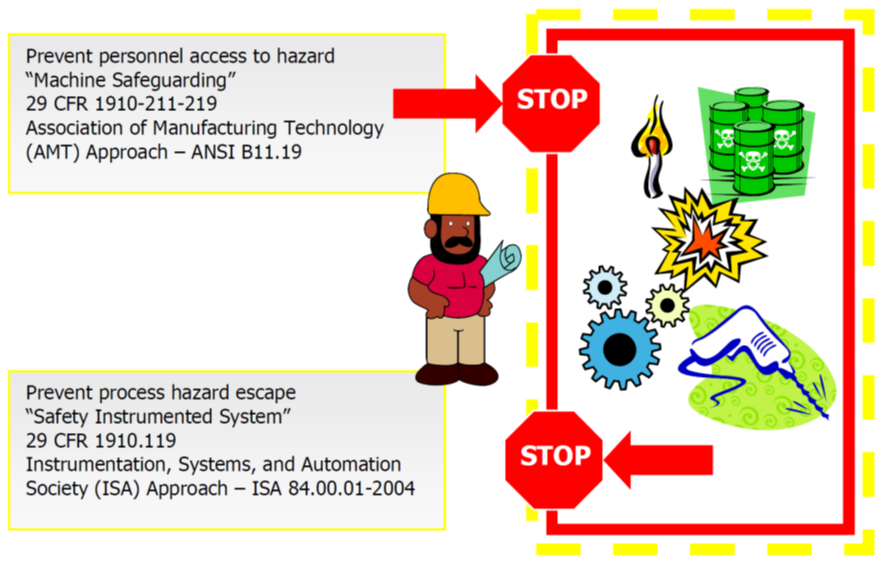Industry has applied instrumentation and control devices for the
purpose of safeguarding people, equipment, and business for almost
as long as instrumentation and control has been used – that is machine safeguarding and safety instrumented systems. In the “wet”
process industries these devices and systems have been employed to
detect out of control conditions in the process and take mitigative
action to move the process to a safe state (i.e., safety instrumented systems). In the “discrete”
manufacturing industries instrumentation and controls have been used
to prevent personnel from exposing themselves to sources of danger,
such as hazardous motion, by either interlocking barriers to prevent
access to the hazard while it is present or remove power from the
hazard when personnel come into close proximity (i.e., machine safeguarding).
As industry matured and instrumentation and control systems evolved
and became more standardized, regulators and industry groups
promulgated standard practices and regulation that define how these
systems should be implemented. This web of regulations and
standards was built from the perspective end use, as opposed to the
instrumentation and controls that are employed in the safety
functionality. As a result, there is now a large number of guidance
documents for the implementation of safety instrumentation and the
determination of which documents apply to which application projects
has become difficult. This situation is further exacerbated by the fact
that much of the engineering for these protective instrumented
systems is being performed by outside engineering contractors and
systems integrators who do not have an end user’s perspective on the
equipment under control. In fact, these outside contractors often
perform projects using a common set of equipment (for instance, a
limit switch de-energizing a motor starter) where the basis, in
standards, for the design varies from client to client and even from
project to project for a single client.
Kenexis has prepared a downloadable white paper to assist end users, engineering
contractors, and systems integration firms to determine which
standards and regulations apply to the systems they are designing.
The paper does this by providing an overview of the standards and
regulations that apply to safety instrumentation and a process for
determining which of those will apply to a specific project by analyzing
the nature of the equipment under control (EUC) and the level of risk
reduction that is required of the instrumented systems that are being
proposed for protection.
Download the Basis of Machine Safeguarding Requirements White Paper

